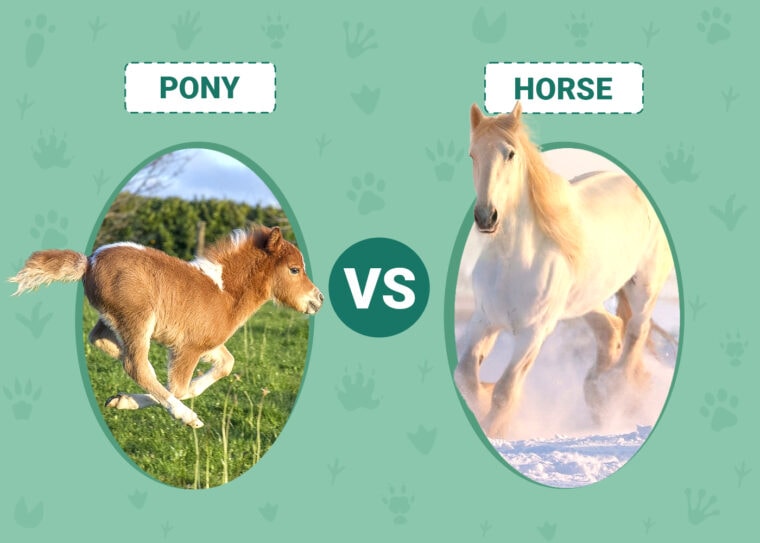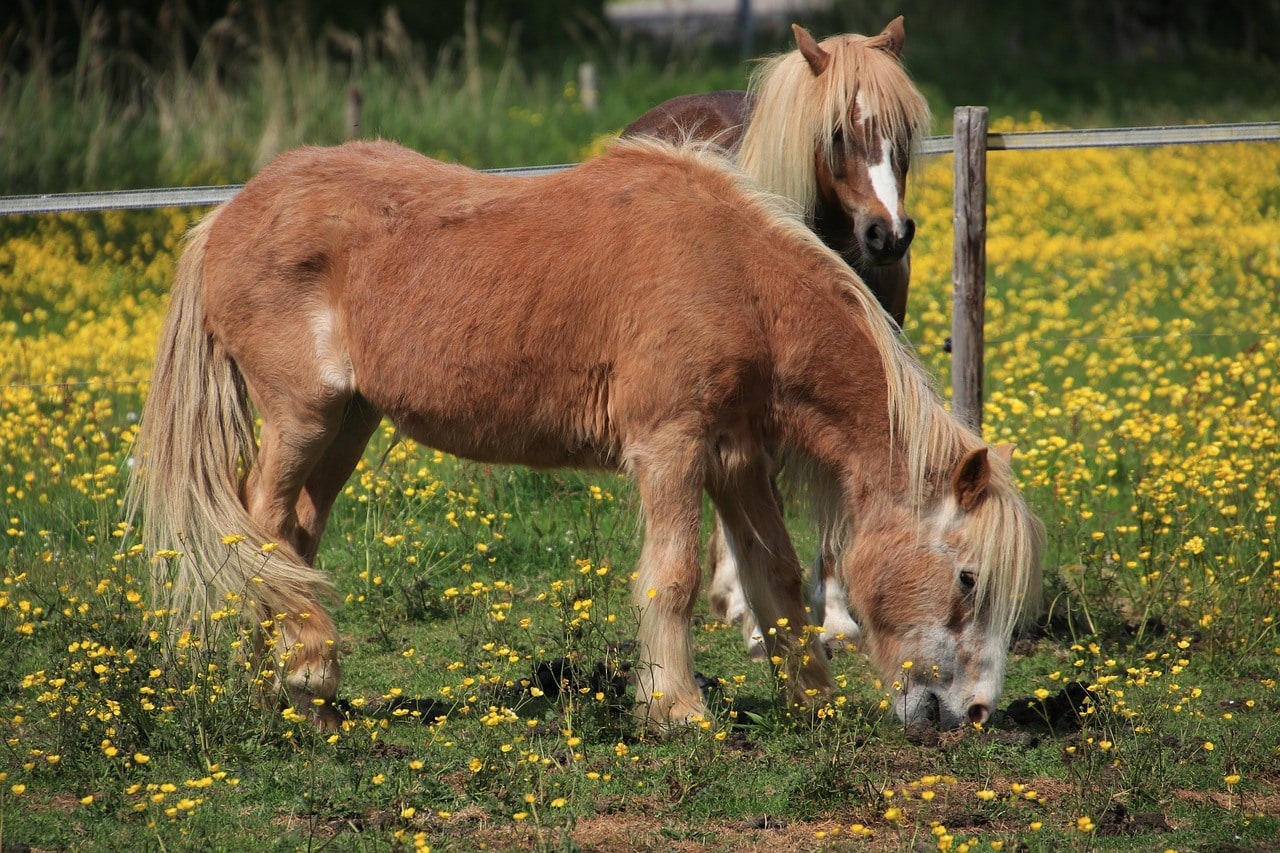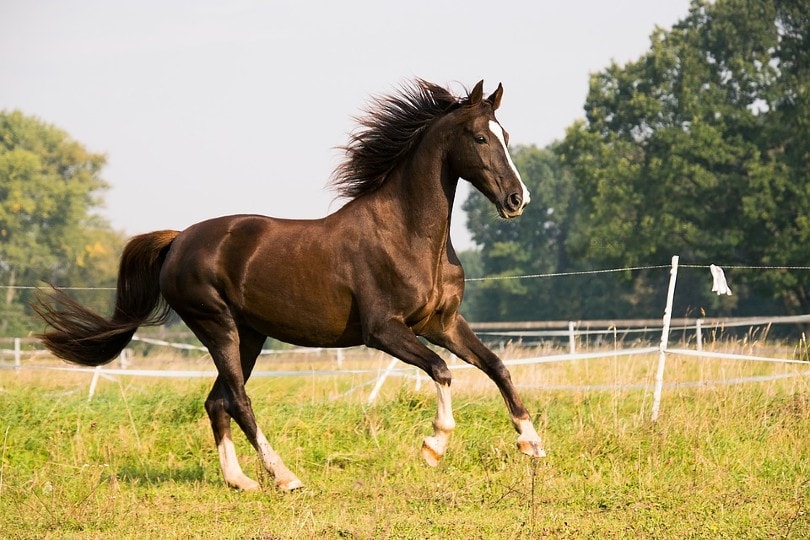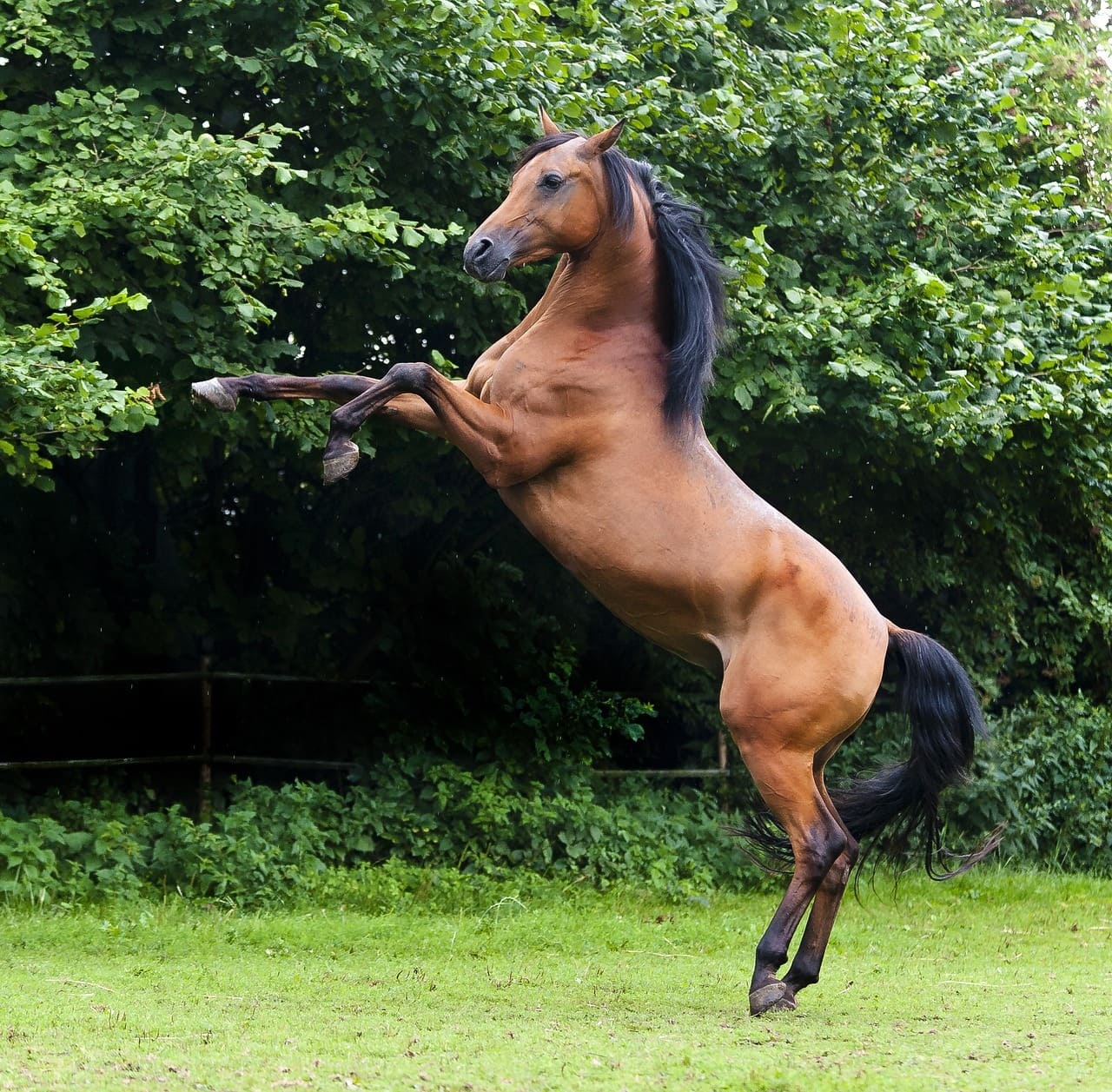
Ponies and horses come from the same species, Equus caballus, and share the same family tree. They can and regularly do crossbreed.
However, it is important to note that while they are of the same family, a pony is their own distinct category and will not grow into a horse. A pony will always remain a pony, and a horse will always be a horse.
The most notable difference between a horse and a pony is their size. A pony is usually under 14.2 hands high, while a horse is over this height, although some individual ponies may mature to a height exceeding 14.2hh and some horses may remain smaller than this cut-off height.
Ponies tend to be stockier than horses, which also explains why some breeds of miniature horses, like the Falabella, are categorized as being miniature horses and not ponies. They have the same proportions as standard horses but are considerably smaller.
Although size is the most obvious difference between these two types of animals, there are other differences, and we take a look at them below so you can choose which is the right Equus for you.

Visual Differences Between Ponies and Horses


At a Glance

Pony Overview

Recent studies and archaeological finds indicate that horses and ponies have both been domesticated for 5,000 years or more and were first ridden and used by humans in the steppes of Kazakhstan. Today, the pony is a popular domestic equine breed that is part of the same species as a horse but is classified differently.
A pony must be less than 14.2 hands high, they are usually stockier than a horse, and they are an extremely strong and typically hardy animal that can be domesticated for riding, used as a packhorse, and for light draft work. Ponies are popular all around the world, and while some see them as being children’s horses, some breeds are more than capable of carrying an adult.
Size and Classification
Most horses and ponies are measured in hands. Measuring tools were not available in ancient times, so owners and buyers used their hands to determine distance. This measurement would have varied according to the size of the individual hand, but it is now officially considered 4 inches in length. So, a pony that measures 10 hands high is 40 inches tall.
A pony should measure under 14.2 hands high to be considered a pony, although many breeds are classified as ponies according to genetics and pedigree, so some examples of ponies may end up being taller than that limit.
Ponies tend to be stockier than horses and stronger per pound of body weight than bigger horse breeds. In fact, if a breed measures under 14 hands but has the same proportions as a horse, it is more likely to be classified as a miniature horse.

Terminology
The word pony is sometimes used as an affectionate term for a horse, regardless of their size. Animals with the same proportions as a horse but smaller are miniature horses rather than ponies. A group of ponies is called a string of ponies.
Young ponies are called foals, females are called mares, and males are called stallions, all of which are the same as horses.
Riding
It is generally accepted that a horse or pony can carry a rider and tack that weighs the equivalent of 20% of their own weight. Therefore, a pony that weighs 600 pounds can carry a total of 120 pounds; the tack can weigh up to 25 pounds, leaving a rider weight of 95 pounds. This is why ponies are typically ridden by children, but some ponies weigh more and might be able to carry the weight of an adult with full tack.

Health & Care
Although they are hardy and level-headed, ponies still need regular care and attention to survive and thrive.
- Exercise: A pony requires a minimum of 20 minutes of walking every day, which is roughly the same as a horse. If you are riding, you will need to determine the exercise period by the shape and condition of the horse, as well as other factors.
- Grooming: Ponies need regular grooming. They should be groomed before and after every ride, and if they are not ridden, then they need to be groomed a minimum of three times a week. Grooming not only keeps your pony looking good, but it also prevents illness and discomfort and enhances the bond between owner and pony.
Suitability
Ponies are suitable for being ridden by children, and some breeds can even withstand the weight of an adult and full tack on their back. Intelligent and friendly, ponies require mental stimulation, as well as physical exercise, so they are better suited to those who have plenty of time to spend with them.

Horse Overview

In over 5,000 years of domestication, horses have been used for riding and transport. They have pulled goods and products and have assisted in industries ranging from forestry to agriculture and mining.
Horses have also been deployed as warhorses and cavalry horses, having been sent to the front line for thousands of years. They differ from ponies primarily in their height, as this member of the Equus family measures over 14.2 hands, although some miniature horses do also exist. Miniature breeds look like shrunken versions of standard horses because they share the same proportions but are much smaller.
Size and Features
Horses measure more than 14.2 hands high and typically weigh between 800 and 2,200 pounds, which is more than a ton.
Some breeds are much larger than others, with the Shire being the largest breed. It weighs 2,000 pounds or more and is, on average, 17 hands high.
Most of the largest breeds are draft horses, which are used for jobs ranging from plowing to general farm labor.

Riding
Although horses have been kept for their milk and their meat, as well as their ability to pull and drag items behind them, they are often used for riding.
Breeds like the American Quarter Horse can be used for English and Western riding and are considered good for beginners because they are level-headed, intelligent, and quite easy to train. They can be energetic and quite spirited, however, depending on the individual.
Health and Care
Horses need regular care to ensure that they do not become ill or develop behavioral problems. This includes:
- Exercise: If you only walk your horse, you should do so for a minimum of 20 to 30 minutes a day. The amount that you ride a horse depends on the horse’s strength and physical qualities. You can build up the time that they spend under the saddle.
- Grooming: Some breeds, like the Friesian, have high grooming demands because of their incredible mane, tail, and feathering around the legs. But all breeds require regular brushing. It helps remove dirt and debris, keeping your horse clean, and it also allows you the opportunity to look for cuts and grazes that can otherwise become infected.

Types
There are four main types of horses:
- Draft Horses: Draft horses are large, strong, heavy horses. They were bred and originally used to pull heavy weights and large objects. They are usually level-headed and fair horses with a good temperament.
- Light: Light horses tend to be more agile than drafts. They were bred for speed or stamina, and they are used to being under the saddle rather than behind the yoke. They can be spirited.
- Gaited: Gaited horses are used to being under the saddle, but rather than being bred for speed or endurance, they were bred for their elegance and smooth ride.
- Warm Blood: Warm-blooded breeds were developed for their good sense combined with their athleticism and are commonly used for dressage and Olympic events.
Suitability
Horses come in a wide variety of sizes, shapes, and temperaments. As such, there is a breed out there for everybody. Whether you want a working horse or one for pleasure, there is a suitable breed, but you do need the room and time to exercise them and maintain their good health.

Conclusion
Ponies and horses are part of the same species and family of animals. Horses are bigger, usually more than 14.2 hands high, while ponies are stockier, measuring less than 14.2 hands. If you’re looking for something small but level-headed that a child can ride on, a pony is a good option. The vast range of horse types, from warm-blooded all-rounders to load-pulling draft horses, means that the horse is suitable for all potential owners.
Featured Image Credit: Top – Olga_i, Shutterstock | Bottom – Sarah Olive, Unsplash







